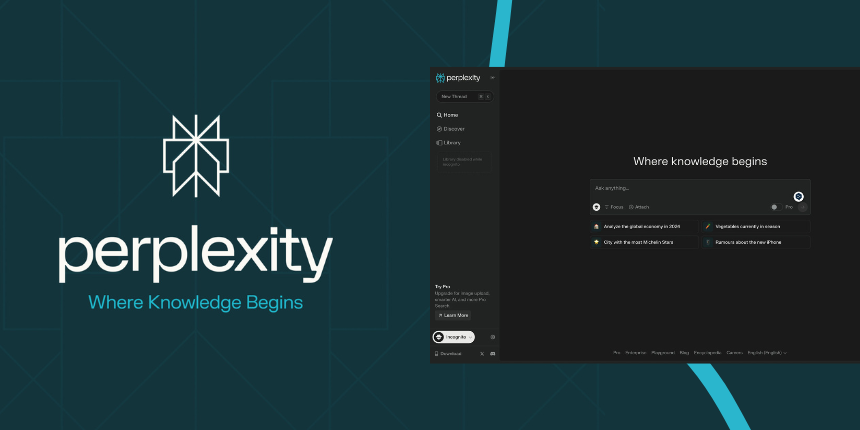
Amplify your reach and drive results with our tailored paid media strategies.

Perplexity, the self-described “AI search engine” or “answer engine,” has quickly gained traction in the generative AI space with its unique approach to online search. Unlike traditional search engines, which rely on a list of web links for users to explore, Perplexity aims to provide direct, conversational answers to user questions, citing sources to enhance trust and transparency. Since the beginning of 2023, Perplexity has seen significant growth, with a sevenfold increase in its user base and a valuation that has now reached $3 billion.
In a bold move, Perplexity has now introduced advertising, focusing initially on sponsored questions as its debut ad format. This strategy reflects an ambition to capture meaningful ad revenue by engaging users in a discovery-oriented environment. However, with a different approach from giants like Google, Perplexity still faces significant hurdles in the ad space as it seeks to define its role among established players.
Perplexity’s appeal lies in its simplicity, intuitive design, and access to unique data that other search engines may not capture. Designed for users seeking quick, reliable information, Perplexity offers clear, direct responses that avoid the need to sift through multiple links. This straightforward interface is a refreshing alternative for users who prioritize speed and accuracy over traditional search experiences.
One of Perplexity’s standout capabilities is its access to less readily available information, such as specific data from a user’s activity on X (formerly Twitter). This ability to retrieve insights from data sources that are often missed by traditional search engines enables Perplexity to capture a subset of information that giants like Google may overlook—an advantage that many users find particularly valuable.
Additionally, accuracy is a core differentiator among Perplexity users. The platform emphasizes fact-checking with third-party sources, prioritizing factual accuracy and information integrity over potentially biased or SEO-driven content. This commitment to transparency builds trust, especially among users wary of affiliate-heavy content common on traditional search engines. However, while Perplexity excels at delivering factual responses, it may not satisfy users needing in-depth advice, positioning it as a powerful yet somewhat limited tool in the AI search landscape.

While Perplexity performs well with straightforward informational searches, it struggles to meet the needs of users seeking specialized or nuanced insights. Those exploring complex queries may find Perplexity’s responses too basic. For example, a user asking Perplexity for the “least expensive property insurance plan” may expect more detailed, comparative recommendations, while a traveler looking to organize a unique itinerary might want hidden insights or specific tips tailored to their preferences. In these cases, Perplexity often provides general recommendations, which, though accurate, may lack the depth needed by users with advanced knowledge or specific goals.
Adding to this limitation is Perplexity’s approach to citing sources. While Perplexity has defined one of its key differentiators as displaying sources next to each statement, users may find that the sources cited aren’t always the most relevant to the specific response provided. This can detract from the platform’s perceived reliability, as users seeking highly relevant or authoritative information may question the value of generalized citations.
This focus on accuracy over detail means Perplexity is best suited for initial information gathering rather than complex planning tasks. As a result, it primarily serves mid-funnel users exploring a topic broadly rather than those ready to convert..
Perplexity’s ad strategy marks an exciting shift, aiming to monetize through sponsored question placements that seamlessly blend with user queries. These ads function as subtle, relevant prompts rather than overt promotional messages, aligning naturally with user intent. Unlike Google Ads, which captures high-intent users, Perplexity’s approach reaches users in earlier, exploratory stages of their journey.
This setup is ideal for industries like finance, travel, and education, where users conduct extensive research before making decisions. While Google Ads includes features designed to drive lower-funnel conversions, Perplexity’s ads focus on engagement, guiding users to consider brands or services early in the decision process.
However, Perplexity’s ad formats may present challenges for advertisers focused on direct sales. Lacking the sophistication to convert high-intent users, this mid-funnel format may not yield immediate sales, limiting its appeal for advertisers seeking quick ROI.
Subscribe to our monthly newsletter.
While Perplexity just launched Perplexity Ads, the platform has already taken its next big step by introducing a shopping feature called Shop Like a Pro, which could revolutionize its approach to both user experience and advertising. Currently available exclusively to Pro users in the U.S., Shop Like a Pro enables users to purchase products directly within the platform, removing the need to visit external retailer websites. This bold move reduces friction in the buying process, making it faster and easier for users to complete transactions with just a few clicks.
Despite this progress, Perplexity’s ability to compete with Google is limited by its lack of a robust ad network ecosystem. Google’s extensive publisher tags and advanced advertiser-side tracking through tools like Google Ads and the Google Marketing Platform provide unmatched reach and insights—capabilities Perplexity has yet to develop.
With Shop Like a Pro, Perplexity is venturing into e-commerce, complementing its mid-funnel ad strategy and offering brands a unique way to engage users. While promising, the feature must evolve to match the sophistication of Google Shopping ads, known for detailed product information like pricing, availability, and promotions. Without similar functionality, attracting advertisers at scale may prove challenging.
Looking ahead, Shop Like a Pro could become a pivotal revenue stream for Perplexity, particularly as it expands access to more users and establishes partnerships with leading retailers. This feature signals Perplexity’s ambition to merge search, advertising, and commerce into a unified platform, positioning itself as a serious contender in the evolving AI and e-commerce landscape.
Perplexity has positioned itself uniquely in the AI search landscape with its “answer engine” approach and transparent, fact-based responses. Its mid-funnel ads aim to engage users earlier in their journey, but its smaller user base of 15 million may make advertisers cautious. Privacy and brand safety concerns also add to advertiser hesitation, as clients seek assurances on content quality and ad relevance.
The addition of the Shop Like a Pro feature enhances this strategy by introducing e-commerce opportunities, signaling Perplexity’s broader ambition to bridge search, advertising, and commerce. While still an emerging platform, its innovations are worth watching as it seeks to challenge established players.
Want to learn how your brand can leverage platforms like Perplexity? Contact our agency today to get started.
Amplify your reach and drive results with our tailored paid media strategies.
Amplify your reach and drive results with our tailored paid media strategies.
Subscribe to our monthly newsletter.